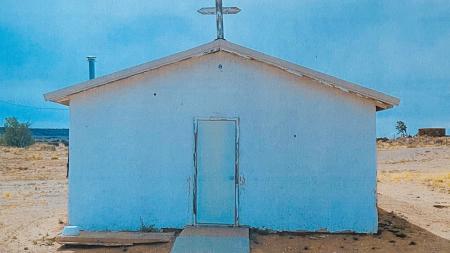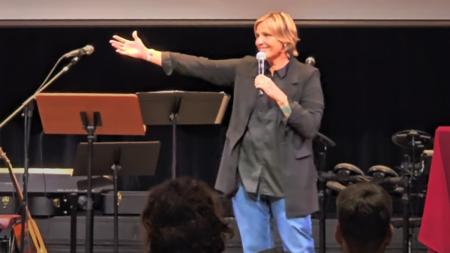Worship Survey 2018 Results Released

For the first time in 20 years, an extensive survey has been completed to explore how Christian Reformed congregations in North America do worship. Some of the results show intriguing changes.
For instance, CRCNA congregations are currently celebrating the Lord’s Supper more frequently than they were in 1999, according to results of the denomination’s recently released 2018 Worship Survey.
Also in this same nearly 20-year period, Sunday-evening services have declined, and membership of individual churches has gone down.
While these trends may already have been apparent, the survey also revealed some lesser known realities. For example, use of the Ten Commandments and the CRCNA’s contemporary testimony Our World Belongs to God have gone up in worship settings. Joyce Borger, director of Worship Ministries, shared many of these surprising and not-so-surprising results in a webinar in which she sketched initial findings of the new survey.
Overseen by the Center for Social Research at Calvin College, the survey had a 30-percent response rate with a balanced representation of churches in Canada and the United States.
Because a 20-percent response rate is considered adequate to represent an audience surveyed, said Borger, “we can confidently consider these stats to be representative of the larger denomination.”
According to the survey, in 1999, 73.5 percent of churches had two worship services, while today, taking the U.S. and Canada together, only 37 percent of churches worship twice on Sunday, said Borger.
“In most instances there is not a big difference between churches in Canada and the United States when it comes to worship practices,” she added.
“In future surveys,” she said, “it may be interesting to ask churches to select whether they are rural, urban, or suburban and do some data analysis that way.”.
“I have a suspicion that we will see greater differences between rural and urban churches, for example, than we do between Canadian and U.S. churches in general,” she said.
Generally speaking, churches continue to get smaller, as can be seen when comparing how many churches had an average attendance of less than 99 people in 1999 and how many have that attendance today, said Borger.
“Many of these smaller churches have fewer resources available to them in the way of staff, volunteers, and finances. What does worship look like when you don’t have members who are musicians or have the budget to hire them?” she asked.
While the survey shows that churches are celebrating the Lord’s Supper more often today than they were in 1999, said Borger, “what is fascinating is that among those churches that most often practice weekly communion are [ones that we call] emerging and multiethnic churches.”
Given the number of individuals who have food allergies in our culture today, Borger also noted surprise that many of our churches still do not provide [bread or juice] options for these individuals” to use for participating in the Lord’s Supper.
In terms of prayer, only 84 percent of churches include a pastoral prayer in their morning worship to raise the needs and praises of congregational members, the church, our communities, and the world. This means 16 percent of congregations are not modeling how to pray for each other or the world.
“If we don’t model such prayer in our worship, how will that influence the prayers of our people the rest of the week?” asked Borger. “As well, over 50 percent of our congregations never or seldom include prayers of lament.”
When asked if they shared faith stories or testimonies as a regular or occasional part of worship services, less than 50 percent responded that they did.
“We can see that few of our churches share conversion stories [as part of worship], while more share stories of God at work in the world around them or mission reports,” Borger said.
As for expressions of worship, CRC members may kneel and lift their hands a little more today than in 1999. But, in general, worshipers in the CRC are not physically expressive.
The survey also looked at how worship and worship services were designed — and in some cases have failed — to accommodate a wide variety of congregational members.
For instance, only 67 percent of churches have done intentional work to break down barriers to allow for the full participation of persons with disabilities. The resulting statistic is that 25 percent of our churches do not have any persons with disabilities present for their whole service even though persons with disabilities make up 22 percent of the population in Canada and 19 percent of the population in the U.S., said Borger.
In addition, only around 30 percent of churches regularly include youth in worship leadership. This is important, said Borger, because research has shown that if you want your children to attend worship as young adults they need to be involved with worship leadership when they are middle and high schoolers.
The fact is that when there is someone helping to lead worship regularly who looks like us (age, gender, and race), that communicates in a profound way who is part of the worshiping community, she said.
Churches are also beginning to live-stream their worship services, but because of copyright issues with the music, many churches record and store only the sermons preached at those services.
“Our churches do seem to utilize Facebook, which makes sense — but Millennials and Gen Z tend not to utilize that platform,” said Borger.
As a result, in order to better connect with young people, churches need to find more effective ways to communicate with them on other social media platforms.
The survey also offers findings on the types of worship resources churches use, the holidays and special days of worship that churches observe, and information on infant baptisms.
You can listen to the webinar and see slides on the Network. More analysis will be coming in conjunction with the Calvin Institute of Christian Worship and the Calvin Center for Social Research in the next months.


